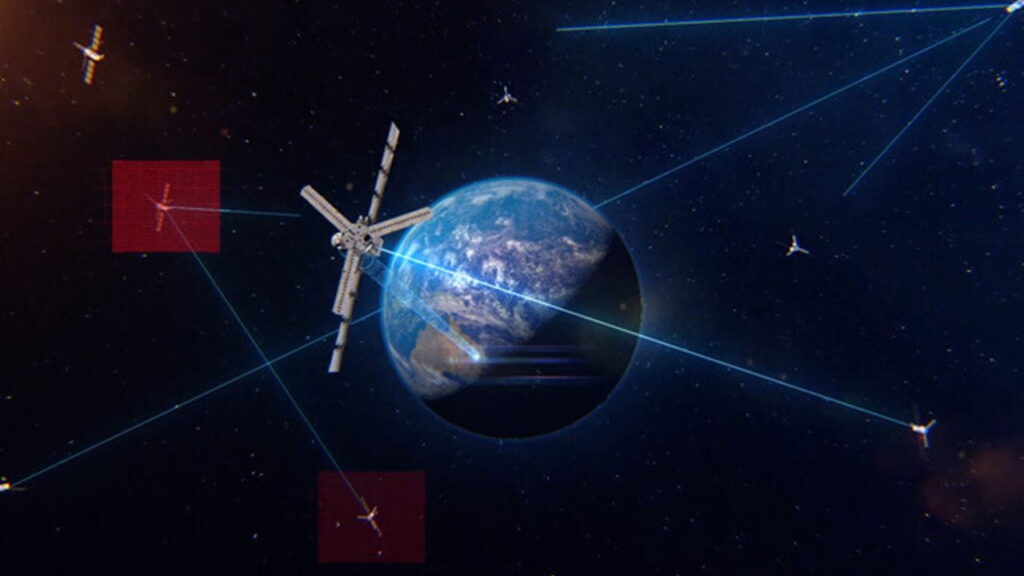
The Space Force is moving fast to develop a new set of missile warning/tracking satellites in MEO. (Graphic: Raytheon Technologies)
WASHINGTON — With a prospective budget boost in fiscal 2024 as a tailwind, the Space Force is speeding towards development of a new constellation in medium Earth orbit (MEO) for missile warning and tracking — asking for industry input by May 16 on a second, more robust satellite configuration.
The Resilient Missile Warning/Missile Tracking – MEO (MEO MW/MT) constellation “will be incrementally developed in capability-based deliveries called Epochs,” the service’s March 31 request for information (RFI) explains. “Each Epoch is expected to include at least one competitive award and allows for insertion of new technology, innovative solutions, and progressive or updated warfighter requirements to ultimately meet future capability needs.”
The Space Force’s primary acquisition command, Space Systems Command (SSC), initiated the effort to operate satellites in MEO as part of the service’s overhaul of how it does missile warning and tracking — expanding from previous programs that focused on a handful of satellites in geosynchronous orbit (some 36,000 kilometers in altitude) to a network of hundreds of satellites in multiple orbits. MEO lies between the upper edge of low Earth orbit at 2,000 kilometers above the Earth and geosynchronous orbit.
Meanwhile, the Space Development Agency is developing another Resilient Missile Warning/Missile constellation in low Earth orbit (LEO), which encompasses altitudes below 2,000 kilometers down to the top of the Earth’s atmosphere. The agency on Sunday successfully launched the first set of test satellites in that constellation.
Both the SDA and the SSC programs are using the rapid development and acquisition approach pioneered by SDA, whereby satellites’ improved capabilities are developed incrementally on a two- to three-year cycle. The Space Force asked for $2.3 billion for the two programs plus a new ground segment for both in FY24, more than double FY23 request of $1 billion. (Congress appropriated $1.2 billion in FY23 for the combined efforts.) The service is planning to spend nearly $5 billion through FY28 on the three-pronged effort.

The Space Force’s plans to spend nearly $5 billion through FY28 to develop satellites and ground systems for resilient missile warning/tracking. (Table courtesy of Wes Rumbaugh at the Center for Strategic and International Studies)
The MEO program in essence transitioned SSC’s 2021 study, first reported by Breaking Defense, to a program of record, with Raytheon Intelligence & Space and Boeing’s Millennium Space Systems contracted in January to build MEO MW/MT Epoch 1 prototypes. The service intends to orbit at least four satellites to provide “initial warfighter capability” by 2028.
The RFI is asking for industry ideas for Epoch 2 satellites and an “integrated MEO ground segment,” but details are classified.
“Epoch 2 will emphasize the maturation of MW/MT sensors, optical cross-links, data fusion, constellation mission management and robust ground communications,” SSC noted in a March 31 press release.








